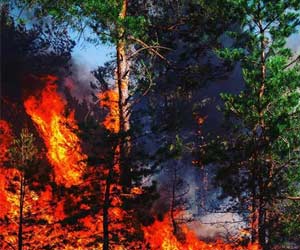Scientists have discovered in experiments that the widespread die-off of drought-stressed trees across the southwestern United States during future droughts will occur at least five
Scientists have discovered in experiments that the widespread die-off of drought-stressed trees across the southwestern United States during future droughts will occur at least five times faster if climate warms by 4 degrees Celsius.
The experiments were conducted at the University of Arizona's Biosphere 2.According to the scientists, quantitative information on how sensitive drought-stressed trees are to hotter temperatures is critical for predicting drastic, sudden and widespread die-offs.
University of Arizona (UA) researchers and their colleagues transported 20 reproductively mature pinon pine trees from New Mexico to Biosphere 2's glass-enclosed 3.14-acre living laboratory near Oracle, Arizona, for the experiment.
Half the trees were kept in an area at temperatures normal for pinon pine. Half were kept in an area warmer by 4 degrees Celsius, or about 7 degrees Fahrenheit.
Once the trees were established, researchers deprived some of them of water.
Drought killed the trees at the higher temperature 28 percent faster than it killed the trees at the cooler temperature.
Advertisement
"What was really striking is that all the trees in the warmer research area died first," said Henry Adams of UA's ecology and evolutionary biology department, who headed the experiment.
Advertisement
Regional tree die-off changes the landscape so much that it can have profound implications that include changes in nitrogen and other soil nutrients, hydrology, erosion, landscape reflectivity or 'albedo', release of stored carbon into the atmosphere, and wildlife habitat, according to Adams.
"The Biosphere 2 experiment is a critical next step to understanding how global climate change can trigger large-scale vegetation change on dramatically short timescales," said professor David D. Breshears of UA's School of Natural Resources, a scientist on the Biosphere 2 experiment.
"This study gives us a measure of how sensitive trees are to temperature," he added.
Source-ANI
SRM








